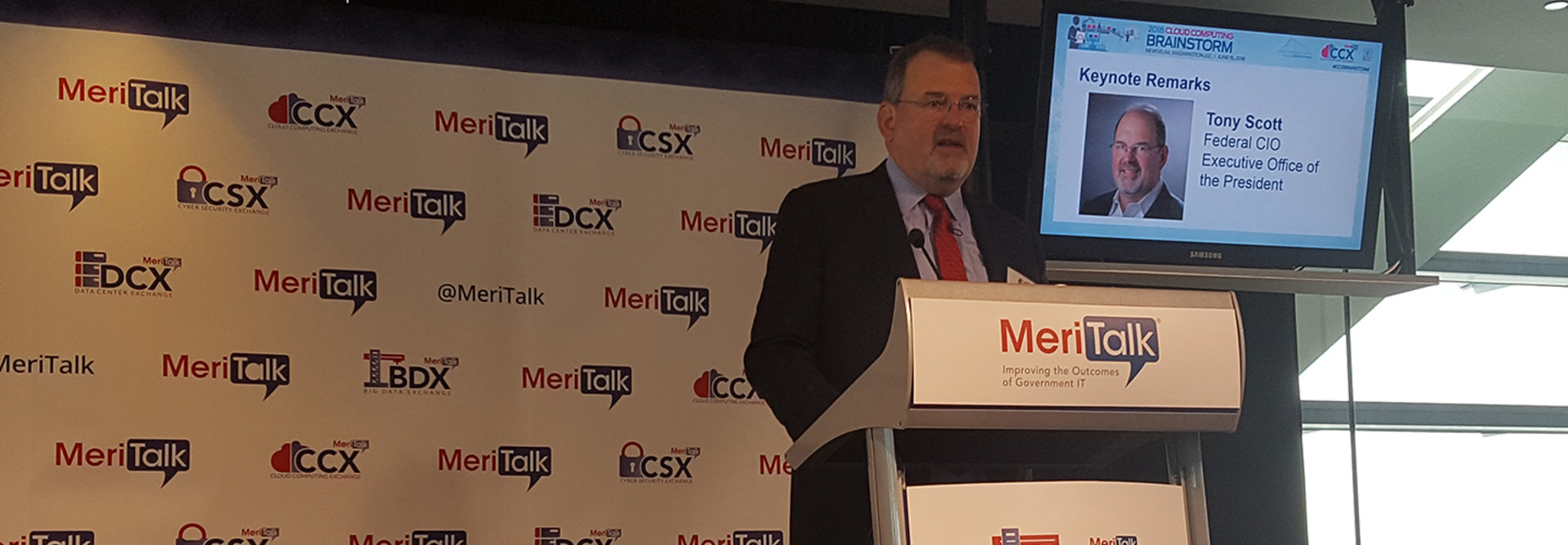Federal Agencies Have a Window to Upgrade to the Cloud and Modern IT
The federal government has a clear and open window to spur a wave of modernization of agencies’ IT systems, but only if Congress provides the funding, according to two federal officials.
Speaking at the 2016 MeriTalk Cloud Computing Brainstorm event, federal CIO Tony Scott and Rep. Gerald Connolly (D-Va.), argued that the time is ripe for Congress to approve funding for the Obama administration’s proposed “Information Technology Modernization Fund,” or ITMF. The fund’s approval, the pair stated, would lead to more agencies adopting cloud services and more efficient spending.
Connolly, one of the architects of the Federal Information Technology Acquisition Reform Act (FITARA), said that the problem-filled rollout of healthcare.gov had exposed that the “underbelly of public policy is that IT piece” and that if IT is not implemented properly, “all of your wonderful, glorious public policy reforms collapse.”
The Need for Modernization
Connolly called for several reforms to bring federal IT into the 21st century, including a renewed push around data center consolidation. “If you want to get serious savings that can be reinvested in the enterprise, that’s how you do it,” adding that there are billions of dollars in potential savings. However, he said agencies need to do more. “But trying to get people to even accurately account for how many data centers they’ve got, let alone consolidate them, has been a chore.”
He also said that the Federal Risk and Authorization Management Program, better known as FedRAMP, was designed to streamline the process for cloud service providers (CSPs) to get approval to work with federal agencies. However, Connolly contended that a costly and difficult process is discouraging CSPs from applying.
The General Services Administration has outlined several steps it is taking to speed up the approval process, but Connolly said more needs to be done.
Noting that some federal IT systems date back to the Lyndon Johnson administration, Connolly said it is “unacceptable” that 80 percent of the annual $82 billion federal IT budget goes to operations and maintenance. “The only good thing about that is the Chinese don’t know how to hack into COBOL,” he joked, referring to the outdated programming language that is still in use in the federal government.
“We have got to move the federal government to the 21st century in IT. It’s critical to the entire mission of everything we do,” Connolly said. “And the good news is there is increasing recognition of the importance of that. This is no longer a backwater subject that only a handful of people get involved in.”
Connolly said there is bipartisan consensus in Congress that more needs to be done to update federal IT, and praised Scott for leading the charge. “I really think it’s a great moment for reform, for effective reform, that will make a huge difference in how we operate,” Connolly said. “We have to move IT from a commodity management mentality to a transformative process mentality.”
The goal should be to deliver government services faster, more efficiently, and at a lower cost.
Scott Makes His Pitch
Just as he did Tuesday at the 2016 Federal Forum, Scott pressed his case for the modernization fund, which needs to be authorized by Congress.
“Everybody understands that this is now a critical issue in the federal government,” he said. “Everything we do as a federal government is heavily dependent on information systems to deliver the mission that all of us have.”
Maintaining the status quo, in which the vast majority of federal IT spending goes to maintain legacy systems, is not an option, Scott said. “I used to work at General Motors and Bob Lutz was one of our famous outspoken leaders, and he said one time, doing certain things is like trying to solve the obesity problem by having clothes manufacturers only make small clothes,” he said. “And getting up here and suggesting that agencies should do this or that or the other thing without the enabling mechanism I think is the equivalent.”
Scott outlined the ITMF’s structure again, as he did at Federal Forum, in which agencies would present business cases to an independent board made up of IT experts, business process change specialists and procurement officials. The board would review the business cases and approve funding for the upgrades to applications and IT infrastructure. The goal of the ITMF is to have agencies pay back into the fund via savings they achieve so that other modernization projects can be financed.
“We all realize we want to get to the cloud. We want to have fewer data centers. We want to have a more efficient spend. We want to have a whole bunch of things,” Scott said. “But what I know after a year and a half is we’re not going to get there if I have to go tin cup around to 7,000 different programs, and say, ‘Everybody donate a little blood here to make this happen.’ It’s way too time-consuming and the chances of success are really, really small, even if everybody agrees that it’s the right thing, which I think we actually have broad agreement on.”
Scott notes that roughly every five years’ agencies can reap benefits from technology enhancements that double computing, storage and network capacity. However, agencies are not taking advantage of the benefits because of the federal IT funding model.
The fund is designed to promote and finance cross-agency shared and modern technologies. “It could be public cloud, private, hybrid cloud,” Scott said. “But we’re going to grade or value proposals that take advantage of more modern approaches much more highly than anything that’s just a ‘lift and shift’ of existing technologies.”
The fund will also reward modernizations that improve cybersecurity and that take advantage of modern technologies and architectures.
“If the fund gets repaid, that capital can be used to reinvest in the next set of things that need upgrading and replacing,” Scott said. “And the endgame here, ultimately, is a continuous refresh, continuous upgrade model, where we realize we’re never done. Every five years, we should be surfing the wave of the technology advantages that come along through all of the great technology providers that support the federal government and our economy.”









